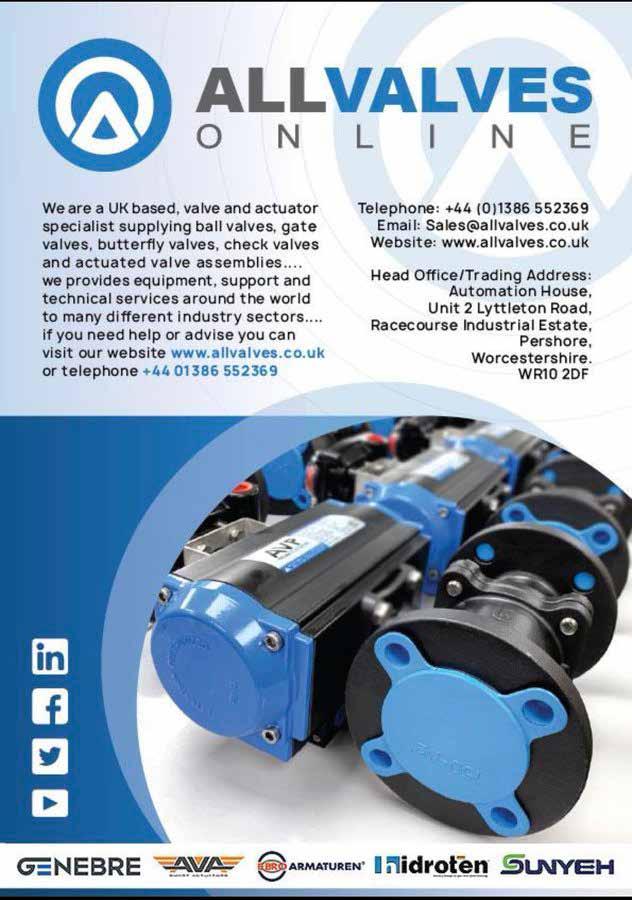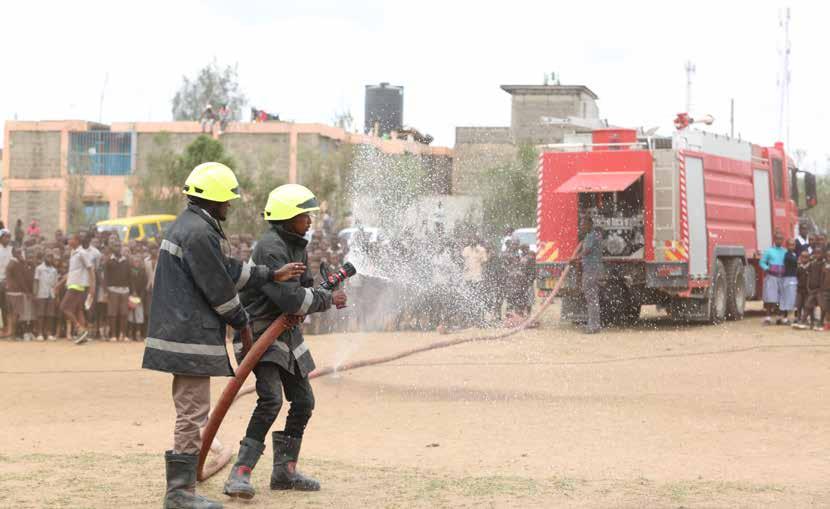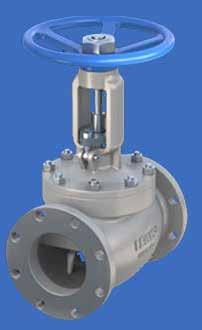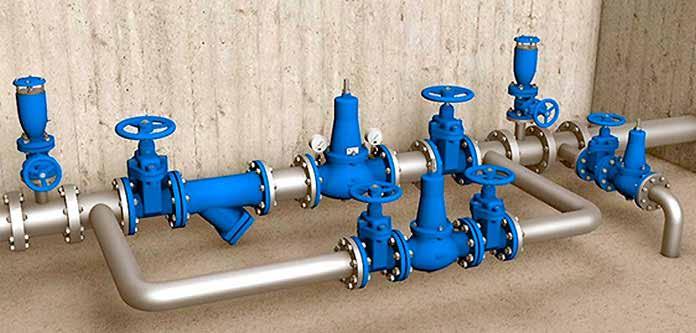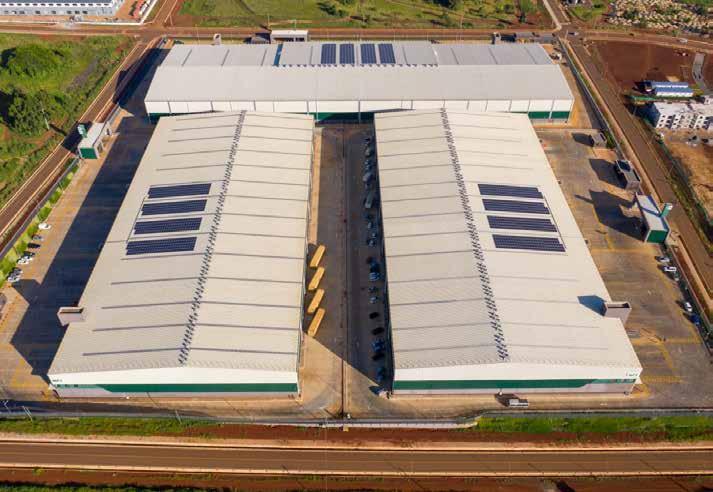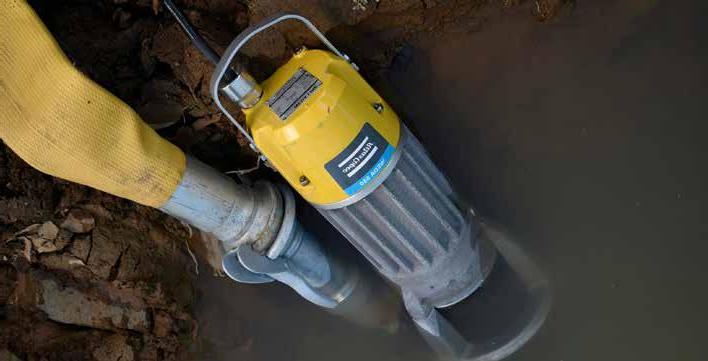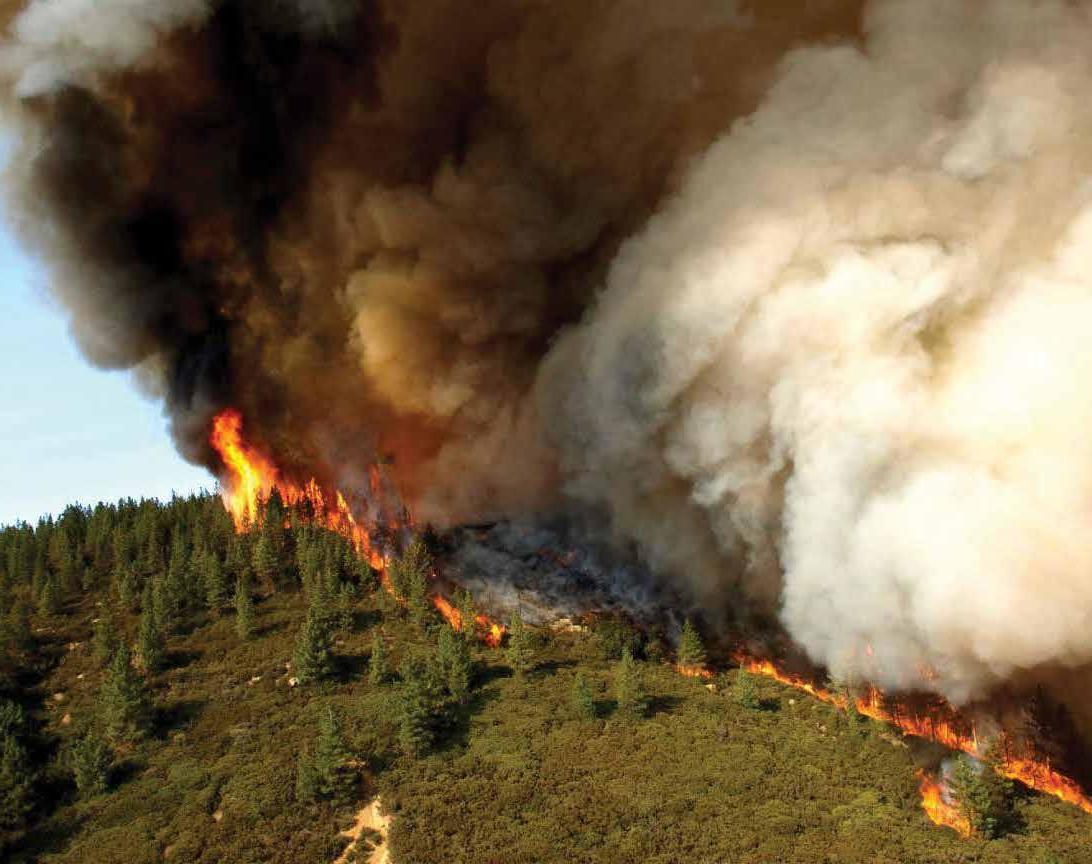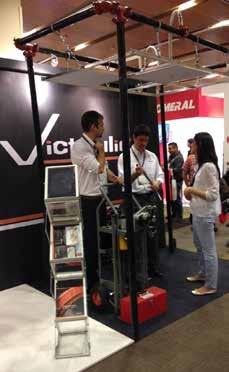
3 minute read
JSG industrial
and switch the fire pumps on. But the only way to switch off a fire pump is for a fire fighter to do this manually in the pump room. This is an international code of practice that is designed to avoid the pumps switching off due to any malfunction in the control system. The capacity of the pumps is decided by considering a number of factors, some of which are: • the area covered by hydrants / standpipes and sprinklers • the number of hydrants and sprinklers • the assumed area of operation of the sprinklers • the type and layout of the building
The distribution system consists of steel or galvanized steel pipes that are painted red. These can be welded together to make secure joints, or attached with special clamps. When running underground, they are wrapped with a special coating that prevents corrosion and protects the pipe.
Advertisement
Types of distribution systems
There are basically two types of distribution systems.
Automatic Wet systems: These are networks of pipes filled with water connected to the pumps and storage tanks. The networks of pipes are filled with pressurized air instead of water. When a fire fighter opens a hydrant, the pressurized air will first rush out.
The pressure sensors in the pump room will detect a drop-in pressure, and start the water pumps, which will pump water to the system, reaching the hydrant that the fire fighter is holding after a gap of some seconds. This is done wherever there is a risk of the fire pipes freezing if filled with water, which would make them useless in a fire.
Manual distribution systems: These systems have an inlet for fire engines to pump water into the system. Once the fire engines are pumping water into the distribution system, fire fighters can then open hydrants at the right locations and start to direct water to the fire. The inlet that allows water from the fire engine into the distribution system is called a Siamese connection.
In high-rise buildings it is mandatory that each staircase have a wet riser, a vertical firefighting pipe with a hydrant at every floor. It is important that the distribution system be designed with a ring main, a primary loop that is connected to the pumps so that there are two routes for water to flow in case one side gets blocked.
In more complex and dangerous installations, high and medium velocity water-spray systems and foam systems (for hazardous chemicals) are used. The foam acts like an insulating blanket over the top of a burning liquid, cutting off its oxygen. Special areas such as server rooms, the contents of which would be damaged by water, use gas suppression systems. In these an inert gas is pumped into the room to cut off the oxygen supply of the fire.
It is a legal duty of building owners and/ or employers to ensure that suitable fire prevention and fire-fighting equipment is in place and functional. An annual inspection by a third party who meets the relevant fire management qualifications and guidelines is required. In between annual inspections, it is recommended that the pump is run for a short period once a week to check performance. Regular visual checks are also recommended, in order that early signs of wear can be detected.
YOUR FIRE SUPPRESSION PARTNER
The risk of fire is real and can have catastrophic consequences on the welfare of your people, your assets, and your business. Protect your personnel & mobile equipment with one of the world’s most sophisticated foam based fire suppression systems, which utilise the latest engineering technology to provide 24/7 fully monitored solutions in accordance with ZABS ZS1209:2019 standard.
JSG Industrial South Africa | sales@jsgindustrial.co.za | www.jsgindustrial.co.za

